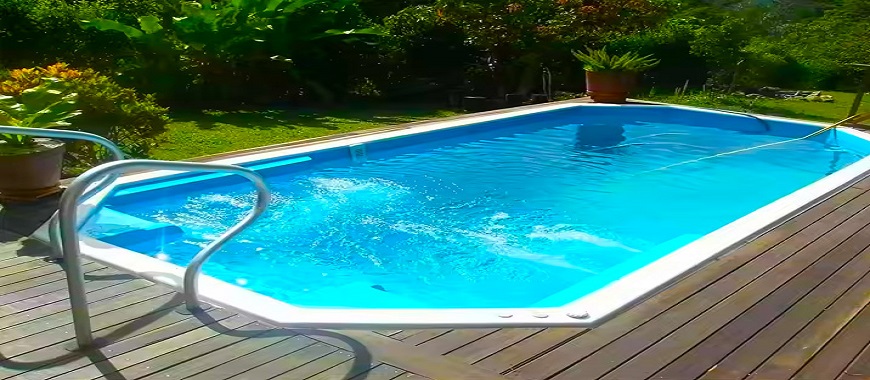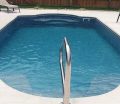
Fiberglass tubs have become a popular choice among homeowners due to their affordability, lightweight nature, and ease of installation. However, with regular use over the years, these tubs can show signs of wear, including discoloration, scratches, and stains that detract from their aesthetic appeal and functionality. Understanding what can you put on an old fiberglass tub is crucial for maintaining its appearance and ensuring longevity. Using the right cleaning agents and restoration products can make a significant difference in the tub’s condition. Regular maintenance not only enhances the look of the fiberglass but also helps prevent further damage, ultimately extending the life of your tub and keeping your bathroom looking fresh and inviting.
Cleaning Solutions: What Can You Put on an Old Fiberglass Tub and Fiberglass Tub Cleaner and Polish?
Understanding Specialized Fiberglass Tub Cleaners
When it comes to maintaining the appearance and functionality of your fiberglass tub, using the right cleaning products is essential. Specialized fiberglass tub cleaners are formulated to tackle soap scum, hard water deposits, and stains without damaging the delicate surface. These cleaners are designed to be gentle yet effective, ensuring that your tub remains pristine without risking scratches or dulling the finish.
Recommended Products for Cleaning and Polishing
Several products stand out when considering what can you put on an old fiberglass tub. For cleaning, look for options like Soft Scrub or Mrs. Meyer’s Clean Day Multi-Surface Cleaner, which are gentle enough for fiberglass surfaces. For polishing, products like Gel-Gloss or 303 Aerospace Protectant can help restore the shine and provide a protective layer against future stains. Always read the labels to ensure compatibility with fiberglass surfaces.
Importance of Non-Abrasive Cleaners
It’s crucial to use non-abrasive cleaners when dealing with fiberglass tubs to prevent scratching and damage. Abrasive materials, such as scouring pads or harsh chemical cleaners, can wear down the gel coat finish of the tub, leading to unsightly marks and a dull appearance. By choosing the right non-abrasive cleaners and polishes, you can keep your fiberglass tub looking new and extend its lifespan. Regular maintenance with appropriate products not only enhances the tub’s aesthetics but also helps prevent the buildup of grime and discoloration.
What Can Take Tar Off of Fiberglass Tubs
Best Cleaner for Fiberglass Tub: What Can You Put on an Old Fiberglass Tub?
Comparing Cleaners for Fiberglass Tubs
When considering what can you put on an old fiberglass tub, it’s important to choose the right cleaner to effectively remove stains while protecting the surface. Various cleaners are available on the market, each with unique formulations. Popular options include Soft Scrub, which contains a gentle abrasive that helps lift dirt without scratching, and Dawn Dish Soap, known for its grease-cutting ability while being safe for fiberglass. Other effective products include CLR (Calcium, Lime, and Rust Remover) for hard water stains and Kaboom Foam-Tastic, which provides a powerful clean with a color change indicator.
Key Features to Look For
When selecting a cleaner, focus on non-toxic ingredients to ensure safety for both your family and the environment. Additionally, look for cleaners specifically formulated for fiberglass, as they will be effective against common stains such as soap scum, mildew, and mineral deposits. Effectiveness against stains is crucial; therefore, products with enzyme-based formulas can be particularly beneficial as they break down organic materials without harsh chemicals.
Tips for Choosing the Right Cleaner
To choose the right cleaner for your fiberglass tub, consider the following tips:
- Read Labels Carefully: Ensure the cleaner is suitable for fiberglass and does not contain harsh abrasives or bleach.
- Check Reviews: Look for products with positive customer feedback specifically for fiberglass tubs.
- Test on a Small Area: Before applying any new cleaner to the entire tub, test it on a small, inconspicuous area to ensure it doesn’t damage the surface.
- Consider Your Cleaning Frequency: If you regularly maintain your tub, a mild cleaner may suffice, but for more challenging stains, a stronger cleaner may be necessary.
By selecting the appropriate cleaner with effective ingredients, you can maintain the appearance and integrity of your fiberglass tub while ensuring a safe cleaning process.
What Can Cause Damage to Fiberglass Reinforced Plastic Tubs Easily
What Can You Put on an Old Fiberglass Tub: Fiberglass Bathtub Refinishing Kit
Overview of Fiberglass Refinishing Kits
When considering what can you put on an old fiberglass tub to restore its original beauty, fiberglass bathtub refinishing kits provide a practical and effective solution. These kits typically contain essential components such as a cleaner, primer, epoxy or resin coatings, and application tools like brushes or rollers. The cleaning agents help prepare the surface by removing any soap scum, oils, or contaminants that can hinder adhesion. The primer prepares the fiberglass for the topcoat, which is designed to create a durable, glossy finish that resembles a new tub.
Step-by-Step Guide to Using Refinishing Kits
- Preparation: Start by thoroughly cleaning the tub with a non-abrasive cleaner to eliminate dirt and residue. Rinse and dry the surface completely.
- Repairing Damages: Inspect the tub for any cracks or chips and use the included filler to repair these areas. Follow the instructions for curing time.
- Applying Primer: Once repairs are set, apply the primer evenly over the entire surface using a brush or roller. Allow the primer to dry as directed.
- Topcoat Application: After the primer has dried, mix the epoxy or resin coating according to the kit’s instructions. Apply the first coat evenly and allow it to cure fully. Depending on the kit, you may need to apply multiple coats for optimal results.
- Final Touches: After the final coat has cured, inspect the tub for any missed spots and touch them up as necessary. Once everything is dry, your tub will look revitalized and glossy.
Benefits of Refinishing vs. Replacing
Refinishing a fiberglass tub using a refinishing kit offers several advantages over replacing the entire unit:
- Cost-Effective: Refinishing is generally much cheaper than purchasing and installing a new bathtub, saving homeowners a significant amount of money.
- Less Time-Consuming: The refinishing process can often be completed in a day or two, while a full replacement may involve extensive labor and time.
- Environmentally Friendly: By refinishing instead of replacing, you reduce waste and contribute to more sustainable practices.
- Customization: Many refinishing kits come in various colors and finishes, allowing homeowners to customize their tubs to match their bathroom décor.
Using a fiberglass bathtub refinishing kit is an excellent way to rejuvenate an old fiberglass tub. By following the proper steps and understanding the benefits, you can achieve a fresh, new look without the hassle of replacement.
Best Way to Clean Fiberglass Laundry Tubs: Simple Tips
What Can You Put on an Old Fiberglass Tub: Cost Considerations for Reglazing a Fiberglass Tub
Breakdown of Costs Associated with Reglazing a Fiberglass Tub
Reglazing a fiberglass tub can be a cost-effective way to restore its appearance and functionality, but understanding what can you put on an old fiberglass tub in terms of budget is essential. Below is a breakdown of typical costs involved in the reglazing process:
| Item | Cost Range |
|---|---|
| Professional Reglazing Service | $300 - $600 |
| DIY Reglazing Kit | $50 - $150 |
| Additional Materials (if needed) | $20 - $100 |
| Labor Costs (for DIY) | N/A |
Factors Influencing the Price
Several factors can influence the overall cost of reglazing a fiberglass tub, including:
- Size of the Tub: Larger tubs may require more materials and longer labor times, thus increasing costs. Standard size tubs typically range from 5 to 6 feet, while larger models may be more expensive to reglaze.
- Condition of the Tub: Tubs with significant wear, extensive scratches, or multiple chips may require more prep work and materials, leading to higher costs. If there are substantial repairs needed before reglazing, this can add to the overall price.
- Location: Regional price variations can also affect the cost, with professional services potentially being more expensive in urban areas compared to rural locations.
Comparison of DIY Reglazing vs. Hiring a Professional
Deciding whether to tackle the reglazing project yourself or hire a professional is another key cost consideration. Below is a comparison of both options:
| Aspect | DIY Reglazing | Professional Reglazing |
|---|---|---|
| Cost | Lower upfront cost ($50 - $150) | Higher cost ($300 - $600) |
| Skill Level | Requires some DIY skills | Requires professional expertise |
| Time Required | May take longer; 1-3 days depending on experience | Typically completed in 1 day |
| Quality of Finish | Varies based on individual skill | Generally provides a higher quality finish |
| Warranty | No warranty on DIY work | Often comes with a warranty |
While reglazing a fiberglass tub can be a cost-effective solution, understanding the various factors influencing price and weighing the options between DIY and professional services is crucial. Proper budgeting can ensure that you choose the best method to restore your fiberglass tub’s appearance and prolong its life.
What Can You Put on an Old Fiberglass Tub for Cleaning a Fiberglass Tub with a Textured Bottom
Specific Methods and Products Suitable for Cleaning Textured Fiberglass Surfaces
Cleaning a fiberglass tub with a textured bottom requires special attention and care, as these surfaces can trap soap scum, grime, and mildew more easily than smooth surfaces. Here’s what can you put on an old fiberglass tub to keep it looking its best:
- Gentle Cleaners: Use mild, non-abrasive cleaners specifically formulated for fiberglass. Products like baking soda mixed with water create a gentle paste that effectively removes stains without scratching the surface. You can also use a diluted vinegar solution, which helps in cutting through mineral deposits and soap scum.
- Soft Brushes: A soft-bristled brush is essential for cleaning textured surfaces. Avoid using hard brushes or abrasive pads, as these can damage the finish of the fiberglass. A gentle scrubbing action will help dislodge debris while preserving the integrity of the tub.
Challenges Faced When Cleaning Textured Tubs and How to Overcome Them
Cleaning a textured fiberglass tub comes with its unique set of challenges:
- Stains and Build-up: The grooves in textured surfaces can trap dirt and mildew, making it difficult to clean thoroughly. To combat this, regularly clean the tub after use to prevent build-up. Establishing a cleaning routine will help maintain the tub’s appearance.
- Scratching Risks: Textured surfaces can be more sensitive to abrasive cleaners. Stick to non-abrasive products to avoid scratching. Always test any new cleaning solution on a small, inconspicuous area before full application.
Recommendations for Maintaining the Appearance of Textured Bottoms
Maintaining the appearance of your fiberglass tub’s textured bottom involves a few key practices:
- Regular Cleaning: Perform regular cleanings at least once a week, using the recommended products and methods. This prevents dirt accumulation and keeps the tub looking fresh.
- Use a Fiberglass Conditioner: After cleaning, applying a fiberglass conditioner can help restore the shine and add a protective layer, which reduces the chance of staining and makes future cleanings easier.
- Avoid Harsh Chemicals: Stay away from harsh chemicals or abrasive cleaners, as they can damage the finish. Instead, focus on gentle, natural cleaning methods that maintain the integrity of the fiberglass.
By following these guidelines, you can ensure that your fiberglass tub with a textured bottom remains clean, functional, and aesthetically pleasing for years to come. Proper care not only enhances the tub’s appearance but also extends its lifespan.
What Can You Put on an Old Fiberglass Tub: Dealing with Stains on Fiberglass Tubs
Overview of Common Stains Found on Old Fiberglass Tubs
Fiberglass tubs can accumulate a variety of stains over time, detracting from their appearance and potentially leading to further issues. Common stains include:
- Brown Stains: Often caused by mineral deposits from hard water or rust from plumbing fixtures, these stains can become quite noticeable on the surface of the tub.
- Yellow Stains: Usually a result of soap scum, body oils, or prolonged exposure to sunlight, yellow stains can make an otherwise clean tub look dirty and uninviting.
Understanding what can you put on an old fiberglass tub to address these stains is essential for maintaining its appearance and longevity.
Effective Cleaning Methods for Removing These Stains
Removing stains from fiberglass tubs requires a gentle yet effective approach:
- Baking Soda Paste: For brown stains, create a paste by mixing baking soda with a small amount of water. Apply this paste to the stained areas and let it sit for 15-20 minutes. Then, scrub gently with a soft cloth or sponge before rinsing thoroughly.
- Vinegar Solution: To tackle yellow stains, mix equal parts white vinegar and water in a spray bottle. Spray the solution on the stained areas and allow it to sit for about 10 minutes. Wipe with a damp microfiber cloth, rinsing well afterward.
- Commercial Cleaners: There are also specialized fiberglass cleaners available that can effectively remove tough stains. Look for products that are labeled as safe for fiberglass and follow the manufacturer’s instructions.
Prevention Tips to Keep Fiberglass Tubs Looking New
Preventing stains from forming in the first place is crucial for maintaining your fiberglass tub:
- Regular Cleaning: Establish a routine cleaning schedule to keep soap scum and dirt from building up. Wipe down the tub after each use to remove any lingering moisture or residue.
- Use a Fiberglass Conditioner: Periodically apply a fiberglass conditioner or polish designed to restore shine and provide a protective layer against staining agents.
- Avoid Harsh Chemicals: Stay away from abrasive cleaners or harsh chemicals that can damage the tub’s surface. Instead, use gentle, non-abrasive cleaning products to maintain its integrity.
By understanding the types of stains that can affect fiberglass tubs and implementing effective cleaning methods, you can keep your tub looking new and inviting. Regular maintenance and the right preventive measures are key to enjoying your fiberglass tub for years to come.
FAQs about What Can You Put On An Old Fiberglass Tub
Rejuvenating a fiberglass tub can restore its original shine and appearance, making it look new again. Start by thoroughly cleaning the tub with a mild, non-abrasive cleaner to remove soap scum and stains. After cleaning, you can use a fiberglass polish or conditioner specifically designed for fiberglass surfaces. Apply the product according to the manufacturer’s instructions, typically using a soft cloth or sponge to ensure an even coat. For deeper scratches or discoloration, consider using a fiberglass refinishing kit, which usually includes a cleaner, filler, and a clear coat to seal and protect the surface. After the application, allow sufficient drying time as specified in the product instructions. Regular maintenance, including wiping down the tub after each use and using gentle cleaners, will help keep your fiberglass tub rejuvenated for years to come.
When caring for a fiberglass tub, avoid using abrasive cleaners, scouring pads, or steel wool, as these can scratch and damage the surface. Harsh chemicals, such as bleach or ammonia, can also harm the fiberglass, leading to discoloration or weakening of the material. Additionally, avoid using any cleaners that contain acidic components, as they can degrade the gel coat finish that protects the fiberglass. Instead, opt for gentle, non-abrasive cleaners designed for fiberglass. Always read product labels to ensure they are safe for use on fiberglass surfaces to prolong the life of your tub.
Yes, you can cover a fiberglass tub, and doing so can help protect it from damage and staining. There are various options available for covering your tub, including tub liners, which are made from durable materials that fit over your existing tub, providing a fresh look and additional protection. Alternatively, you might consider using a fitted shower curtain or tub cover to shield it from dust and debris. However, it’s essential to ensure that the cover allows for proper ventilation to prevent moisture build-up, which could lead to mold or mildew.
To effectively seal a fiberglass bathtub, it is crucial to choose the right sealing product that is compatible with fiberglass. The best method involves cleaning the tub thoroughly to remove any dirt, soap residue, or previous sealants. After the surface is clean and dry, select a high-quality silicone sealant or caulk designed for use in wet environments. Apply the sealant along the seams where the tub meets the wall and any other areas that require sealing. Ensure a smooth, even application by using a caulk smoothing tool or your finger to spread the sealant and remove any excess. Allow the sealant to cure fully according to the manufacturer’s instructions before using the tub to ensure a watertight seal. Regular inspection of the seals will help maintain the integrity of the bathtub over time.

As the editor of GangLong Fiberglass, I have years of experience and in-depth research, focusing on cable tray products, fiberglass solutions, and grille systems. I incorporate years of industry insights and practical experience into every content, committed to promoting the progress of the industry. At GangLong Fiberglass, my commitment is reflected in every product, from innovative cable trays to durable fiberglass solutions and sturdy grille systems. As an authoritative voice in the industry, my goal is to provide valuable information to professionals and businesses and promote forward-looking solutions.


